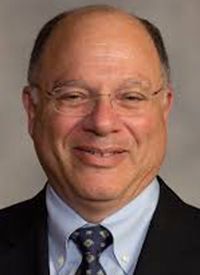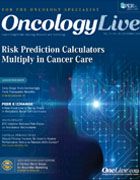Publication
Article
Oncology Live®
A Perfect Storm Brews for Biosimilar Marketing
Author(s):
Pressure to reduce costs associated with biologics is one of the forces driving the rapid expansion of biosimilars, which are biological drugs that are very similar to already approved reference biologics in terms of potency, safety, and efficacy.
Robert M. Rifkin, MD

Robert M. Rifkin, MD
Dr. Rifkin is an attending physician at
Rocky Mountain Cancer Centers,
Denver, Colorado, and is
medical director of Biosimilars,
McKesson US Pharmaceutical
Accounting for nearly a quarter of new drug approvals in the United States from 2010 to 2015, biological agents have played an increasingly important role in clinical care, particularly in oncology. However, biologics also significantly contribute to rising healthcare costs, representing 38% of overall prescription drug revenue in 2015.1
Barriers to Success in the US Market
Pressure to reduce costs associated with biologics is one of the forces driving the rapid expansion of biosimilars, which are biological drugs that are very similar to already approved reference biologics in terms of potency, safety, and efficacy. The Biologics Price Competition and Innovation Act authorized the FDA to create a new regulatory approval pathway for biosimilars. The streamlined 351(k) approval path was designed to introduce competition among manufacturers, with the goal of achieving greater patient access and lower drug costs. An analysis from the RAND Corporation estimates that the introduction of biosimilars could reduce spending on biologics by $54 billion between 2017 and 2026.2In March 2015, filgrastim-sndz (Zarxio; Sandoz/Novartis) was the first biosimilar to receive FDA approval. Since then, 12 biosimilar drugs have been approved by the FDA. In June, the FDA approved pegfilgrastim-jmdb (Fulphila; Mylan/ Biocon) as the first biosimilar to pegfilgrastim (Neulasta). In July, FDA Commissioner Scott Gottlieb, MD, announced a 4-step plan to aid biosimilar competition in the marketplace. This includes improving the efficiency of biosimilar development and approval processes, improving scientific and regulatory clarity for biosimilar makers, working to improve public understanding and acceptance of biosimilars, and supporting a competitive marketplace for these products.3 “I believe some of these actions can be transformative for sponsors’ ability to bring high-quality biosimilars to market,” Gottlieb said. In recent months we’ve seen 2 other biosimilars gain FDA approval: Pfizer’s filgrastim-aafi (Nivestym), a biosimilar to filgrastim (Neupogen), for all eligible indications of the reference product. and Pfizer’s epoetin alfa-epbx (Retacrit), a biosimilar to epoetin alfa (Epogen, Procrit), for all indications of the reference product.
With the pending loss of patent protection for many highvalue biologics, expectations for biosimilar market growth are high. As of December 31, 2017, there were more than 60 biosimilars in development for some 20 reference biologics as part of the FDA’s biosimilar product development program.4
Key to Commercialization is Stakeholder Education
Although there is tremendous excitement about the potential clinical and economic benefits that biosimilars represent, there are still regulatory, reimbursement, and competitive barriers that could limit the market potential (Figure). These include regulatory issues associated with naming, interchangeability, and switching; uncertainty regarding payment rates and reimbursement; and, notably, lagging stakeholder education. These roadblocks have slowed the development of the US market. However, the success of biosimilars in the European Union (EU) demonstrates that these problems are not insurmountable.The biosimilar commercialization dilemma is how to differentiate a product that is essentially the same as another. To promote adoption by patients, physicians, and payers, biosimilar manufacturers must clearly articulate that biosimilars have benefits beyond simply lower cost. Commitment to education was a central theme of American Society of Clinical Oncology’s recent statement regarding biosimilars. Published in the Journal of Clinical Oncology,5 it focused on the value of biosimilars in oncology and highlighted the importance of prescriber and patient education.
Figure. Barriers Prevent Physician Adoption of Biosimilars
Although the reduction of drug costs is a significant benefit, commercialization of a biosimilar is different from that of generics when competition is based primarily on price. Successful biosimilar commercialization requires a well-defined go-to-market strategy that blends proven aspects of branded pharmaceutical marketing and clinical education programs that can be implemented quickly. This starts with fully understanding the timing of the 351(k) regulatory process and employing a unique strategy that encompasses the needs of the multiple stakeholders and makes them comfortable with switching from an original biologic to a biosimilar.
Unless physicians truly understand both the clinical and economic implications of biosimilars, they are unlikely to prescribe them for their patients.
According to a 2017 article from the Generics and Biosimilars Initiative Journal, “Major Lessons Learned From Zarxio’s US Launch: The Start of a Biosimilar Revolution,” adoption of this product has been slow but steady, growing from a 2% market share in December 2015 to a 15% share by the end of 2016.6 The analysis suggests that much of this growth was driven by Sandoz’s aggressive promotion of filgrastim-sndz with an emphasis on physician education via journals and digital content, educational events and meetings, and details from the sales force. The adoption of filgrastim-sndz has also been accelerated by favorable formulary coverage decisions. With more biosimilars coming to market and demonstrating clinical and economic benefits, payers are beginning to expand and increase biosimilar coverage and, in some cases, exclude their reference biologics.7
Building on the Success of Biosimilars in Europe
Ultimately, both clinical education and marketing activities will be needed to educate physicians and payers about product nomenclature, product attributes, and comparisons to reference drugs. Additionally, ongoing patient-centric education and support is critical in helping patients navigate their treatment journey and improving outcomes. Further, an innovative, easy-to-navigate hub program can differentiate between competitive products, creating preference among providers and patients based on their experience with and perception of support services available.More than 700 million patient days on biosimilar treatments have been documented over 10 years of clinical experience within the EU.8 According to the European Medicines Agency (EMA), biosimilars approved through EMA can be used as safely and as effectively in all their approved indications as are other biological medicines.
Since creating a regulatory pathway for biosimilars in 2004, the EU has approved more than 30 biosimilar drugs. In fact, when filgrastim-sndz became the first biosimilar approved in the United States, it was already available in more than 60 countries.9 An analysis by the European Generic Medicines Agency in 2009 estimated that biosimilars had generated €1.4 billion in savings in the EU that year.
Biosimilars: Increasing Access and Reducing Costs
The EU has made significant progress in raising stakeholder awareness, and the continuous education of providers, payers, and patients has been critical to EU biosimilar acceptance. The involvement of regulatory agencies in the education process, through the biosimilars guidelines10 jointly released by the European Commission and the EMA, not only reinforces the importance of these products but also serves as a nonbranded resource.Biosimilars have been bringing value to the US healthcare system by increasing access to drugs and decreasing costs. Approvals for more biosimilars are expected by the end of 2018, and there is a robust pipeline of others in development. With the growing acceptance of the clinical value of biosimilars and continued cost containment pressures, we are entering the perfect storm for biosimilar marketing. To successfully navigate this storm, biosimilar makers must have a well-defined commercialization strategy focused on educating providers, payers, and patients and providing value-added patient support services to improve access.
References
- Express Scripts. 2015 drug trend report. lab.express-scripts.com/lab/drug-trend-report/~/ media/e2c9d19240e94fcf893b706e13068750.ashx. Published March 2016. Accessed August 23, 2018.
- Mulcahy AW, Hlavka JP, Case SR. Biosimilar cost savings in the United States: initial experience and future potential. Rand Health Q. 2018;7(4):3. doi: 10.7249/PE264.
- Remarks from FDA Commissioner Scott Gottlieb, M.D., as prepared for delivery at the Brookings Institution on the release of the FDA’s Biosimilars Action Plan [news release]. Silver Spring, MD: FDA. fda.gov/NewsEvents/Newsroom/PressAnnouncements/ ucm613881.htm. Accessed August 23, 2018.
- Cumulative number of biosimilar development programs in the BPD program in the month. FDA website. accessdata.fda.gov/scripts/fdatrack/view/track.cfm?program= cder&id=CDER-RRDS-Number-of-biosimilar-dev-programs-in-BPD-Program. Updated December 31, 2017. Accessed August 23, 2018.
- Lyman G, Balaban E, Diaz M, et al. American Society of Clinical Oncology statement: biosimilars in oncology. J Clin Onc. 2018;36(12):1260-1265. doi: 10.1200/ JCO.2017.77.4893.
- Sarshad M. Major lessons learned from Zarxio’s US launch: the start of a biosimilar revolution. GaBI J. 2017;6(4):165-1673. doi: 10.5639/gabij.2017.0604.035.
- Dangi-Garimella S. UnitedHealth’s 2017 formulary to support generic and biosimilar drugs. American Journal of Managed Care®. ajmc.com/newsroom/unitedhealths- 2017-formulary-to-support-generic-and-biosimilar-drugs. Published September 23, 2016. Accessed August 23, 2018.
- Biosimilar medicines today. Medicines for Europe website. medicinesforeurope.com/ biosimilar-medicines/. Accessed August 23, 2018.
- FDA approves first biosimilar Zarxio (filgrastim-sndz) from Sandoz [news release]. Holzkirchen, Germany: Sandoz; March 6, 2015. sandoz.com/news/media-releases/fda-approves- first-biosimilar-zarxiotm-filgrastim-sndz-sandoz. Accessed August 23, 2015.
- European Medicines Agency, European Commission. Biosimilars in the EU: information guide for healthcare professionals. ema.europa.eu/docs/en_GB/document_library/Leaflet/ 2017/05/WC500226648.pdf. Updated April 27, 2017. Accessed September 1, 2017.





















%20(2)%201-Recovered-Recovered-Recovered-Recovered-Recovered-Recovered-Recovered-Recovered-Recovered-Recovered-Recovered-Recovered-Recovered-Recovered-Recovered-Recovered-Recovered.jpg?fit=crop&auto=format)
%20(2)%201-Recovered-Recovered-Recovered-Recovered-Recovered-Recovered-Recovered-Recovered-Recovered-Recovered-Recovered-Recovered-Recovered-Recovered-Recovered-Recovered-Recovered.jpg?fit=crop&auto=format)
